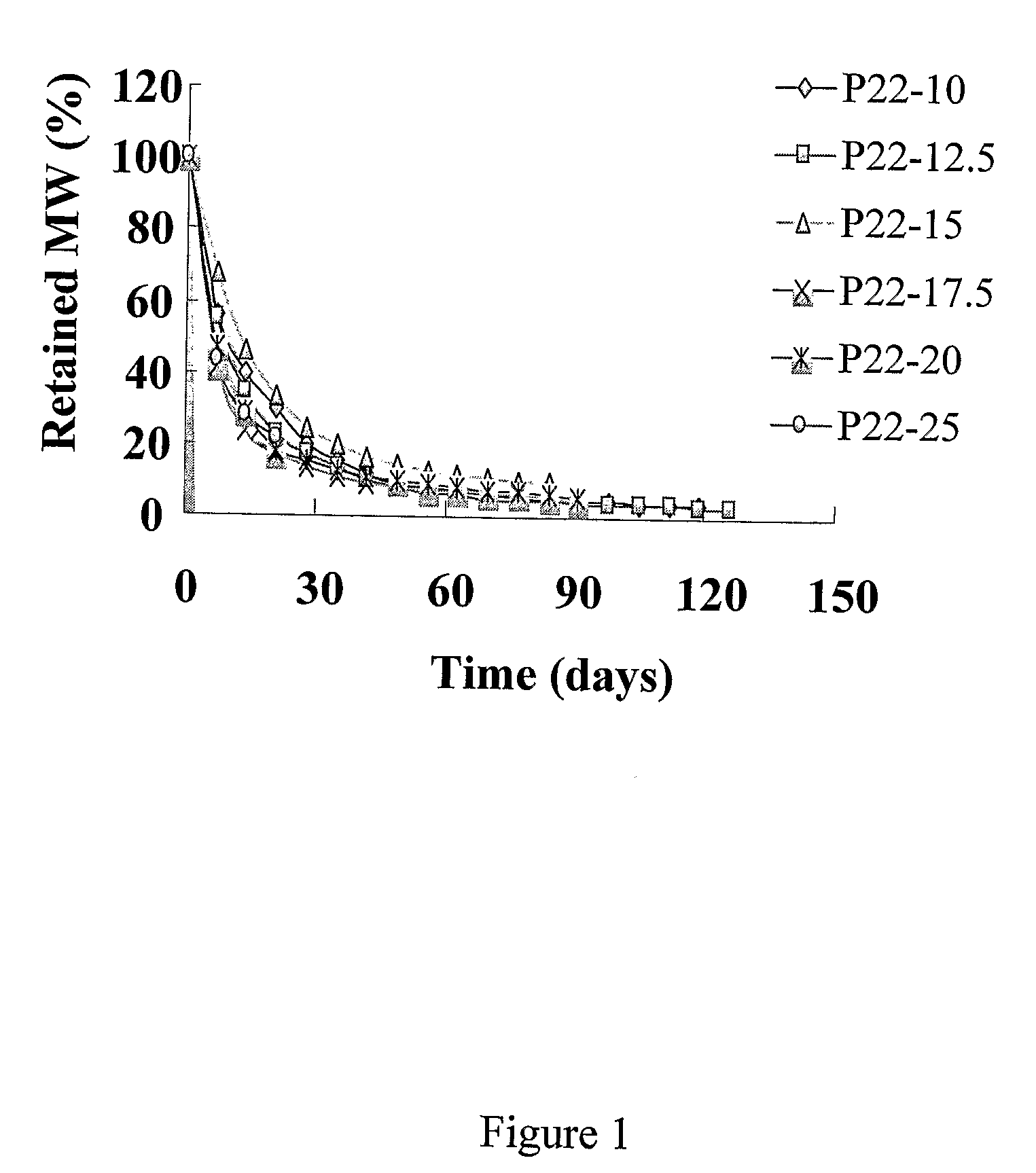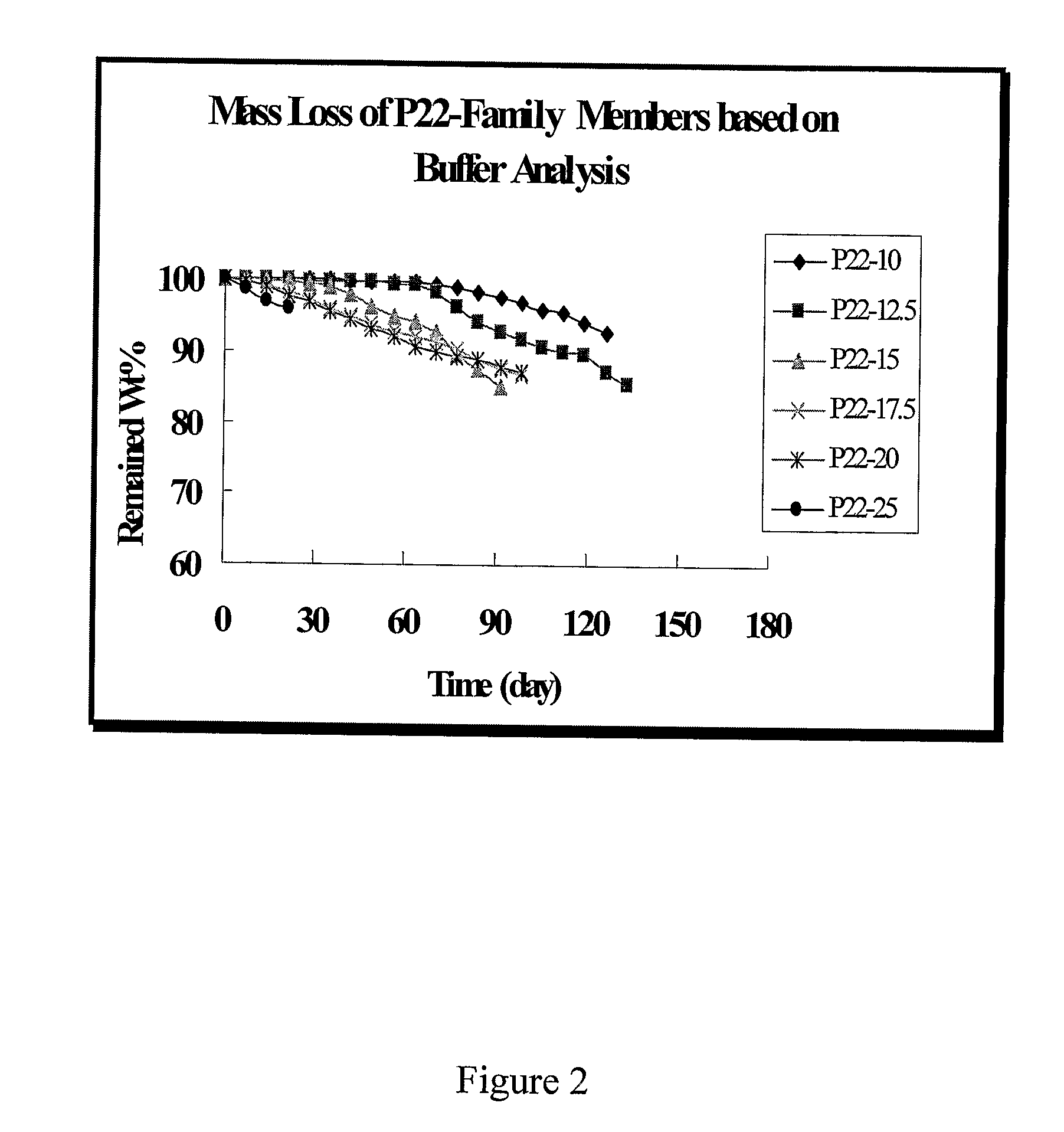Resorbable Phenolic Polymers
a phenolic polymer and phenolic technology, applied in the field of resorbable phenolic polymers, can solve the problems of limited application, thrombosis, and possible patient death, and achieve the effect of preventing the formation of adhesions
- Summary
- Abstract
- Description
- Claims
- Application Information
AI Technical Summary
Benefits of technology
Problems solved by technology
Method used
Image
Examples
Embodiment Construction
[0021]As used herein, DTE refers to the diphenol monomer desaminotyrosyl-tyrosine ethyl ester; DTBn is the diphenol monomer desaminotyrosyl-tyrosine benzyl ester; DT is the diphenol monomer desaminotyrosyl-tyrosine with a free carboxylic acid. Other diphenol monomers can be named using a similar system. P22 is a polymer produced by condensation of DTE and succinic acid. P22-10, P22-15, P22-20, etc., represent polymers produced by condensation of a mixture of DTE and the indicated percentage of DT (i.e., 10, and 20% DT) with succinic acid. See U.S. patent application publication No. 2004 / 0254334 for further explanation and examples of the nomenclature of these phenolic polymers.
[0022]The invention provides diphenol monmer units having structure
wherein m is 0, 1, or 2; n is 0 to 4, and Y is selected from the group consisting of C1-C18 alkylamino, —NHCH2CO2R′, —NH(CH2)qOR′, —NH(CH2CH2O)pR′, —NH(CH2CH2CH2O)pR′,
where q is 0 to 4, p is 1 to 5000, and R′ is selected from the group consisti...
PUM
| Property | Measurement | Unit |
|---|---|---|
| Fraction | aaaaa | aaaaa |
| Fraction | aaaaa | aaaaa |
| Fraction | aaaaa | aaaaa |
Abstract
Description
Claims
Application Information
 Login to View More
Login to View More - R&D
- Intellectual Property
- Life Sciences
- Materials
- Tech Scout
- Unparalleled Data Quality
- Higher Quality Content
- 60% Fewer Hallucinations
Browse by: Latest US Patents, China's latest patents, Technical Efficacy Thesaurus, Application Domain, Technology Topic, Popular Technical Reports.
© 2025 PatSnap. All rights reserved.Legal|Privacy policy|Modern Slavery Act Transparency Statement|Sitemap|About US| Contact US: help@patsnap.com



